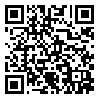Volume 8, Issue 32 (vol. 8, no. 32. 2020 2019)
2019, 8(32): 121-136 |
Back to browse issues page
Download citation:
BibTeX | RIS | EndNote | Medlars | ProCite | Reference Manager | RefWorks
Send citation to:



BibTeX | RIS | EndNote | Medlars | ProCite | Reference Manager | RefWorks
Send citation to:
Shirkhani Z, Chehregani Rad A, Gholami M, Mohsenzadeh F. Morphological and physiological responses of Datura stramonium L. to cadmium toxicity. Plant Process and Function 2019; 8 (32) :121-136
URL: http://jispp.iut.ac.ir/article-1-1026-en.html
URL: http://jispp.iut.ac.ir/article-1-1026-en.html
1- Bu-Ali Sina University
2- Bu-Ali Sina University ,a.chehregani@gmail.com
2- Bu-Ali Sina University ,
Abstract: (3884 Views)
Heavy metals are emitted to the atmosphere by various anthropogenic sources .In the present study, the effects of different concentrations of cadmium (0, 75, 150 and 225 mgl-1) were examined on certain morphological and physiological parameters in Datura stramonium L. The results showed that in the group treated with 225 mgl-1 of Cd, fresh and dry weight of shoot, shoot length, leaf area, net assimilation rate, cell membrane stability index, relative water content of tissue have decreased 36.5, 11.75, 11.95, 63.75, 4.28, 25 and 11.29 percent respectively. The amount of photosynthetic pigments and soluble carbohydrate content in the Cd-treated plants were decreased in comparison to the control ones, while a significant increase was observed in the total protein content and activity of the polyphenol oxidase enzyme. The seed protein profiles showed the formation of new bands and increasing in the density of some bands in Cd-treated plants, could be related to the synthesis of cell detoxification proteins. A decrease in total protein and number of protein bands was observed in the group treated with 225 mgl-1 of Cd in comparison to the other Cd treatments, which is probably caused by the toxication of the translation machinery. The results of this study indicated Cd had detrimental effects on D. stramonium and Cd uptake by the plant without needing to it, leading to negative effects on their function. It seems that D. stramonium was able to resist the damages caused by Cd toxicity, via altering some physiological parameters and changing in the protein pattern.
Keywords: Cadmium, Datura stramonium L., Foliar uptake, Morphological parameters, Physiological parameters
Type of Study: Research |
Subject:
Toxic ions stress
Received: 2018/03/4 | Accepted: 2018/05/13 | Published: 2020/01/19
Received: 2018/03/4 | Accepted: 2018/05/13 | Published: 2020/01/19
Send email to the article author
| Rights and permissions | |
 | This work is licensed under a Creative Commons Attribution-NonCommercial 4.0 International License. |






